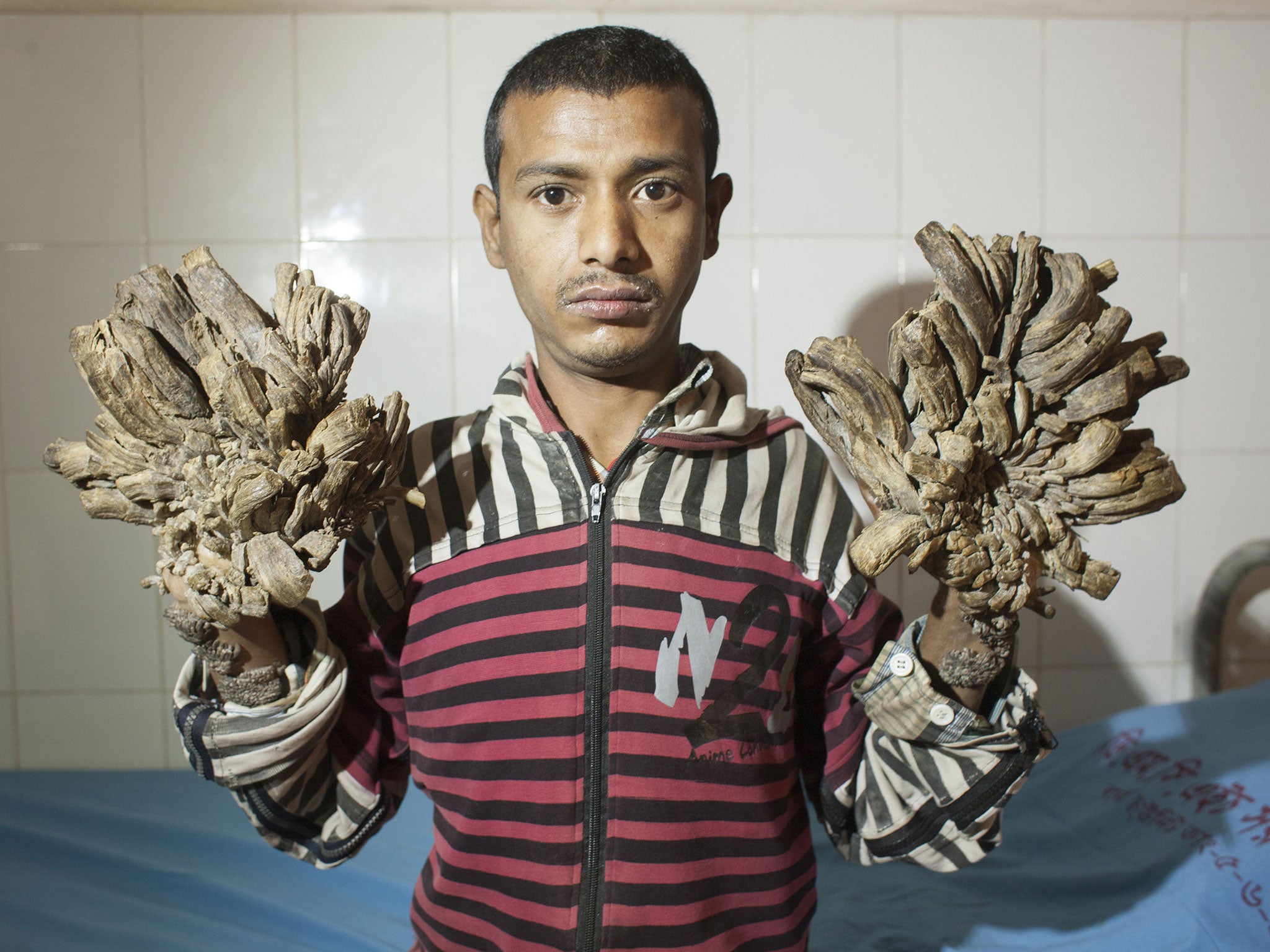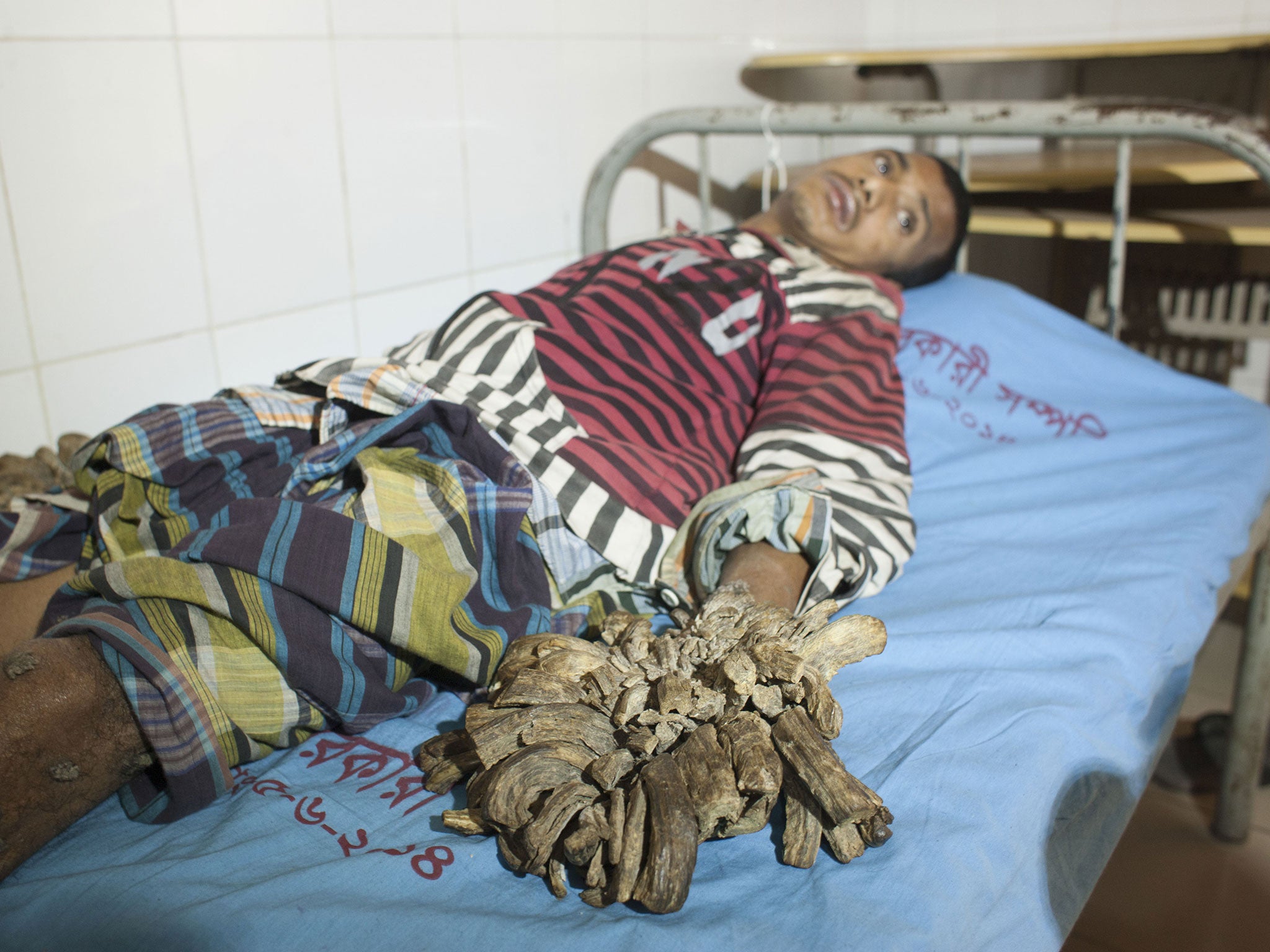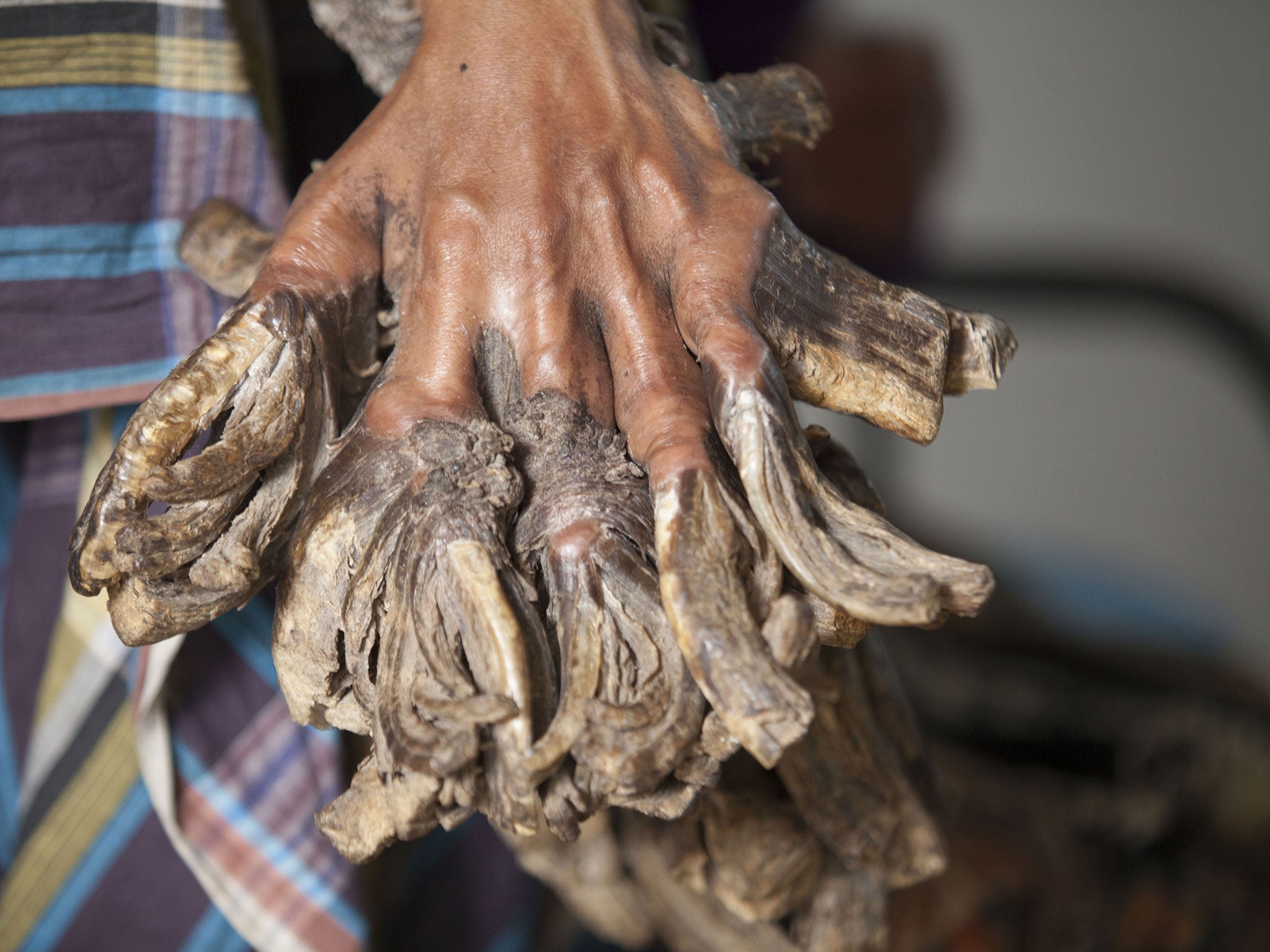Bangladeshi man with rare condition that makes skin 'look like wood' to receive specialist treatment
Rickshaw driver Abul Bajandar suffers from Epidermodysplasia Verruciformis

Your support helps us to tell the story
From reproductive rights to climate change to Big Tech, The Independent is on the ground when the story is developing. Whether it's investigating the financials of Elon Musk's pro-Trump PAC or producing our latest documentary, 'The A Word', which shines a light on the American women fighting for reproductive rights, we know how important it is to parse out the facts from the messaging.
At such a critical moment in US history, we need reporters on the ground. Your donation allows us to keep sending journalists to speak to both sides of the story.
The Independent is trusted by Americans across the entire political spectrum. And unlike many other quality news outlets, we choose not to lock Americans out of our reporting and analysis with paywalls. We believe quality journalism should be available to everyone, paid for by those who can afford it.
Your support makes all the difference.A Bangladeshi man who has been suffering for years from a rare skin disease is set to recieve specialist treatment.
Abul Bajandar, 25, from Khulna in the south west of the country, suffers from Epidermodysplasia Verruciformis, a skin condition causing extreme growths. The growths caused by the disease have been likened to that of tree bark and roots.
Mr Bajandar was forced to quit his job as a rickshaw driver after the growths became problematic.
“Initially, I thought that they’re harmless," said Mr Bajandar to AFP news agency. "But slowly I lost all my ability to work. There are now dozens of two-to-three-inch roots in both my hands. And there are some small ones in my legs.”

Mr Bajandar was admitted to Dhaka Medical College and Hospital earlier this week, reported the Daily Star Bangladesh. A team of doctors from the National Institute of Burn and Plastic Surgery, led by director Dr Samanta Lal Sen, examined him.
Dr Lal Sen said to The Independent: "We have decided to have some investigations including biopsy. After that we will improve his general condition and then slowly we we will go for series of surgical procedures. It will take few weeks to prepare him. All the treatment will be in our unit."
Dr Lal Sen added that the treatment would be undertaken at the expense of the government.
Mr Bajandar was previously being treated in the burns unit of Gazi Medical College Hospital in Khulna.

Epidermodysplasia Verruciformis is a rare hereditary condition, often causing skin tumours and chracterised by an "unusual susceptibility to infection with specific types of human papillomavirus" according to the US National Library of Medicine.
Subscribe to Independent Premium to bookmark this article
Want to bookmark your favourite articles and stories to read or reference later? Start your Independent Premium subscription today.
Join our commenting forum
Join thought-provoking conversations, follow other Independent readers and see their replies
Comments